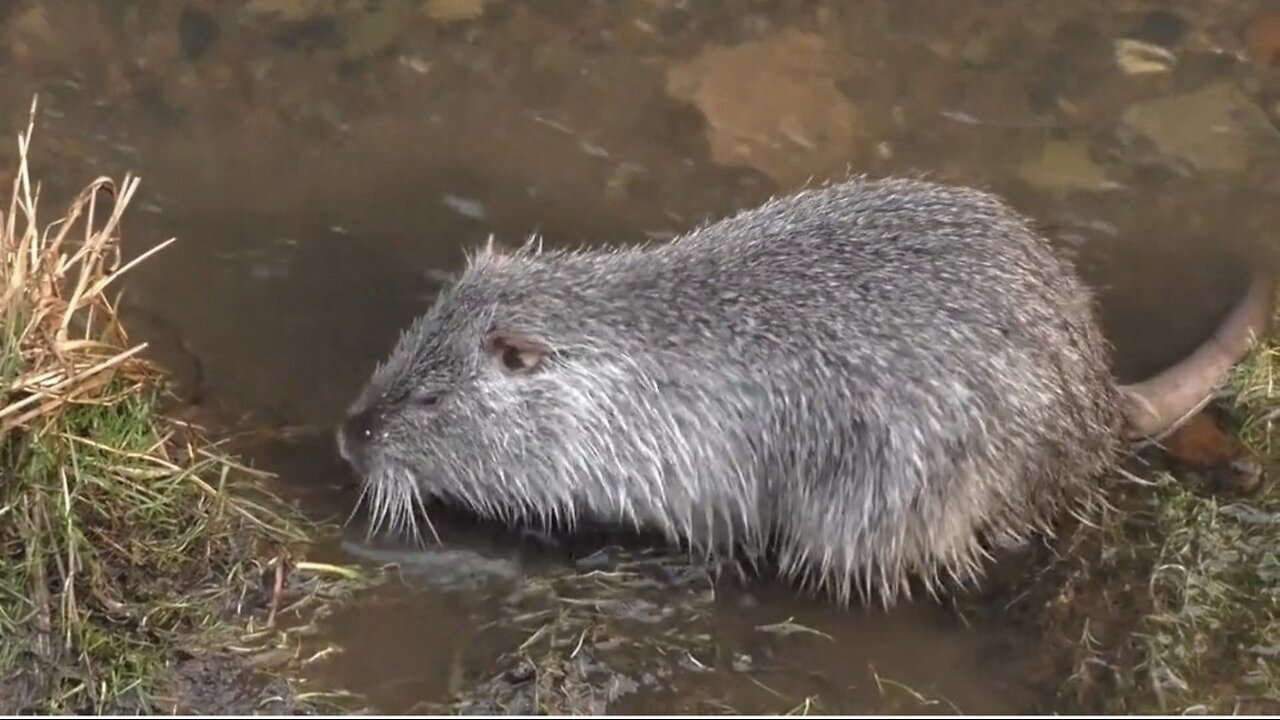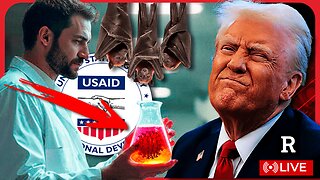Premium Only Content

"Nutria: A Closer Look at the Swamp's Unlikely Resident"
Introduce Nutria (Myocastor coypus) as a large, semi-aquatic rodent native to South America but now found in various parts of the world, including North America, Europe, and Asia.
Appearance: Describe their physical characteristics, including their elongated bodies, webbed feet, large front teeth, and distinctive, rat-like tails. Mention their fur, which is typically brown and can be quite dense.
Habitat and Distribution
Natural Habitat: Explain that Nutria thrive in wetland areas such as marshes, rivers, and lakes, where they can easily access vegetation and water.
Global Distribution: Discuss how they were introduced to regions outside their native habitat for fur farming in the early 20th century and how they have since established populations in various countries.
Diet and Behavior
Feeding Habits: Highlight that Nutria are herbivorous, primarily consuming aquatic plants, grasses, and roots. They play a role in their ecosystems by influencing plant growth and distribution.
Social Structure: Discuss their social behavior, including living in groups and their communication methods. Mention their nocturnal habits and how they build burrows or nests near water sources.
Ecological Impact
Positive Contributions: Touch on their role in wetland ecosystems, such as maintaining plant diversity and providing food for predators.
Negative Impacts: Address the potential problems they can cause, including overgrazing of vegetation, which can lead to erosion and loss of habitat for native species. Mention how they can also disrupt agricultural areas and contribute to water quality issues.
Conservation and Management
Population Control: Discuss efforts made in different regions to manage Nutria populations, including hunting and habitat management. Mention any conservation programs aimed at preserving native wetland habitats and species affected by Nutria.
Public Perception: Explore the mixed feelings about Nutria among local communities, from being viewed as pests to being appreciated for their role in ecosystems.
Conclusion
Summary: Recap the significance of Nutria in their habitats, their impact on ecosystems, and the importance of balanced management strategies.
Call to Action: Encourage viewers to learn more about wetland conservation and the role of various species in maintaining ecological balance.
Visual Elements
Footage: Use video clips showing Nutria in their natural habitats, feeding, and interacting with each other.
Graphics: Include diagrams of their habitat preferences and charts showing population trends in different regions.
Interviews: Feature insights from ecologists or wildlife experts to provide authority and depth to the discussion.
Engagement
Questions for Viewers: Pose questions at the end, such as "What are your thoughts on the impact of Nutria in your area?" or "Have you ever encountered Nutria in the wild?"
This detailed structure should help create an engaging and informative video about Nutria! If you need any specific sections expanded further, feel free to ask.
-
 LIVE
LIVE
SpartakusLIVE
7 hours ago#1 Shadow BANNED Hero
786 watching -
 2:17:46
2:17:46
Kim Iversen
7 hours agoTrump To SMUG Netanyahu: Let's Clear “All” Palestinians From Gaza! | RFK Jr, Tulsi Move On To Round Two
56.2K248 -
 30:25
30:25
Standpoint with Gabe Groisman
1 day agoDemocrats Are Stalling Trump Appointments with Senator Rick Scott
80.4K15 -
 1:00:24
1:00:24
The StoneZONE with Roger Stone
7 hours agoAnthony Fauci’s Brutal History Of Animal Torture Exposed! | The StoneZONE w/ Roger Stone
53.7K18 -
 1:03:38
1:03:38
Man in America
8 hours agoUSAID Corruption, $21 TRILLION Missing, & the End of the US Global Empire?
36.3K29 -
 56:38
56:38
Flyover Conservatives
8 hours ago6 Steps to Take Advantage of Trump’s New Golden Age! - Clay Clark | FOC Show
26.5K2 -
 1:15:25
1:15:25
Glenn Greenwald
8 hours agoTulsi and RFK Jr. Approved by Key Senate Committees; Trump Meets Netanyahu: Wants to Cleanse Gaza; Pro-Palestinian Group Suspended at UMich | SYSTEM UPDATE #402
85.8K101 -
 1:43:57
1:43:57
Danny Polishchuk
8 hours agoThe Funniest Call In Show On Earth - Live From New York City's Best Comedy Club
48.6K1 -
 1:41:13
1:41:13
megimu32
8 hours agoON THE SUBJECT: Will the Super Bowl Be WOKE??!
37.8K7 -
 1:18:26
1:18:26
Redacted News
9 hours agoBREAKING! USAID Created and Funded COVID-19 Virus and Bioweapons, RFK and Tulsi pass major hurdle
158K213